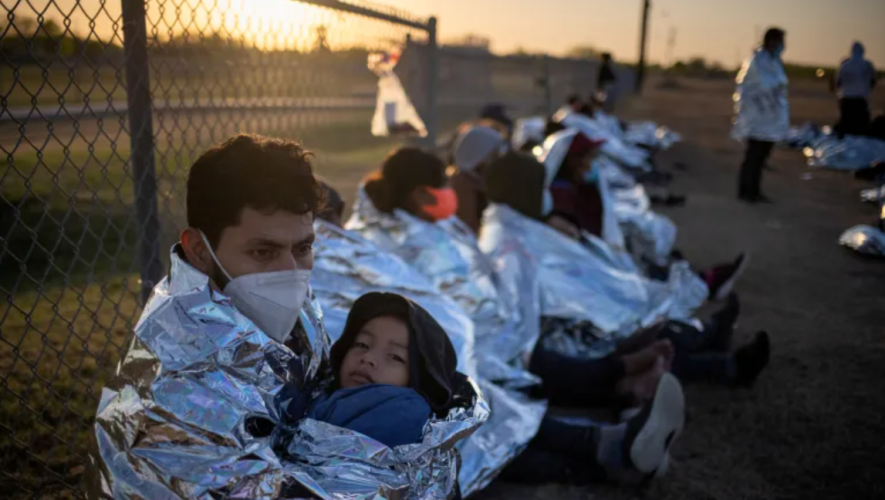Immigration at the United States-Mexico border has surged to record levels in recent years. Between October 2019 and March 2023, nationals of Central America made up one-third of the 5.8 million total immigrants who sought entrance to the United States. According to The Council on Foreign Relations, most Central American immigrants migrate from El Salvador, Honduras, and Guatemala—an area known as the Northern Triangle—with more than two million people migrating since 2019. Migrants from the Northern Triangle and many other Central American countries flee from poverty, violence, and corruption by heading north in search of safety.
Although the handling of the migrant surge was uncertain between American political parties, with more right-leaning individuals wanting to tighten the border, one thing became certain: Central Americans were relocating regardless of existing immigration policy. The surge in immigration at the US border is an alarming symptom of a more significant geopolitical and humanitarian crisis, which many Americans misread.
“Movement has happened since the beginning of time,” says Northeastern University’s Director of Latinx and Caribbean Studies, Isabel Martinez. “When people say there’s a crisis at the border, that’s not the crisis. The crisis is happening in those countries, and we must decide how to receive that.”
So, When Did Central American Immigration Begin?
According to the Migration Policy Institute, an American non-partisan, non-profit organization, the population of Central Americans living in the US grew from three hundred thousand to over three million between 1980 and 2013, and the majority of these individuals came from the Northern Triangle. These countries suffered from political instability that allowed corruption, crime, poverty, and famine to take the lives of thousands of people. The United States’ foreign policy practices, especially during the Cold War Era, arguably contributes to such suffering.
During the Cold War, the United States provided funding, arms, and military training to several countries fighting communism, including Guatemala. This practice was part of American interventionist policy, which was meant to stop the perceived spread of global communism after World War II. In 1951, Guatemala elected Jacobo Arbenz, a military officer and politician who aimed to redistribute property fairly to fight poverty.
At the time, 42 percent of the land was owned by an American company named United Fruit Company. Because Arbenz’s laws would deprive this company of Guatemalan land, his “communist” efforts were thus seen as a “threat to democracy” in the United States. As a result, the CIA aided a military coup of Guatemalan rebels, leading to a thirty-six-year civil war in which thousands of people were killed or left unaccounted for. Guatemalans were left in unlivable conditions even after the war ended, giving them virtually no choice but to migrate.
Unfortunately, this case is but one example of how the United States has created political instability in Central America. Many other countries in the Northern Triangle have also suffered this same miserable fate. When asked about the influence that the United States military aid has had on Central American countries, Martinez says, “This is about US efforts of bounding communism, military interventions, the flow of arms, and supporting certain political figures. I think the Cold War set the stage for repercussions we deal with today, setting up weak infrastructures both physically and civilly.”
If the Civil War Ended, Why Are There Still So Many Migrants?
Although the crisis of political instability began during the Cold War and the latter half of the 1900s, Central America continues to struggle today. Violence in Central America is ongoing, and the US has long played a defining role. While the violence dates back to the Spanish conquest, recent US efforts to “help” corruption and rebuild infrastructure have generally been inefficient— either canceled or put on hold—leaving Central Americans with no other viable options other than heading north.
Moreover, US efforts to “help” recent migrants have also negatively impacted Central Americans. For example, US enforcement measures targeting migrants have actually increased the cost of being smuggled across the border, leading Central American migrants to take out large loans for such services.
In some cases, migrants may find themselves unable to repay these debts, leading to a situation of debt bondage where they are compelled to work under exploitative conditions to settle the incurred financial obligations. This phenomenon is a modern form of slavery that traps individuals in cycles of exploitation; debts are often incurred under vulnerable circumstances and pose significant challenges for victims seeking escape.
The Northern Triangle’s Current Problems
There are a myriad of issues affecting the current socio-political climate in Honduras, Guatemala, and El Salvador. Most of these issues stem from the fact that in 2021, all three of these countries ranked near the bottom for GDP per capita among Latin American and Caribbean states.
One problem uniquely impacting the Northern Triangle is gang violence. The MS-13 gang is prevalent within the region as an international criminal organization that originated in the impoverished neighborhoods of Los Angeles during the 1980s, fueled by the influx of refugees from El Salvador, Guatemala, and Nicaragua. By the mid-1990s, US deportation policies that aimed at addressing gang issues resulted in a significant number of gang members being sent back to Central America. This overwhelmed the capacities of the region’s governments, which were ill-prepared to handle the criminal influx.
According to the United Nations Office on Drug and Crimes, “criminal networks and their activities disrupt stability, undermine democratic institutions and hinder the economic activity vital to the region.” The prison systems in those nations were unprepared for the sudden arrival of organized gang members, and violence rose sharply. As a result, these countries’ weak infrastructures have historically led to inadequate state responses when citizens are in times of dire need.
The problems caused by these weak infrastructures were exemplified when the fiscal response to the pandemic pushed El Salvador’s public debt beyond 90 percent of GDP, making El Salvadorians poorer than they already were. Although migration to the United States decreased in 2020 due to border closures, it soon resurged as Central American countries implemented laxer and more inadequate responses to the pandemic.
Furthermore, recent natural disasters like Hurricane Eta have led to necessary relocation. With the current climate crisis, immigration has only worsened. According to the US Institute of Peace, natural disasters and subsequent crop failures have driven low-income families across the globe further into poverty. These natural disasters mostly result from the climate crisis, making climate change a leading factor in immigration. Relocation due to climate challenges has also led to various territorial disputes between criminal networks. Ultimately, migration into the United States results from multifaceted and dire issues.
The Biden administration has implemented a mix of “stringent and humanitarian” policies that aim to address the current migrant crisis, but these policies sadly often fall short. For example, a new rule prohibits non-Mexican immigrants from applying for asylum unless they have applied in another country. In addition, the administration has also allocated billions of dollars in private investments to help rebuild the governments and increase the overall quality of life in Central American countries.
Many critics oppose Biden’s plan to build security and partnership in Central America, for they believe that this plan only promotes an economic development model that benefits large US corporations and upgrades local military and police forces. This approach, critics assert, historically leads to the dispossession of local communities and the exploitation of cheap labor. Furthermore, they highlight that such economic policies have contributed to environmental degradation, social inequality, and political instability in the region, ultimately exacerbating migration factors. Rather than addressing the underlying issues, Biden’s plan reinforces a framework that prioritizes corporate interests over the long-term well-being of Central American populations.
This is the same problem with existing non-committal immigration policies, such as granting Central American immigrants Temporary Protected Status (TPS) for a period of up to eighteen months. While TPS does allow temporary relocation and protection, it also assumes that immigrants’ home countries will eventually become livable.
“This limbo [TPS] does provide work authorization and shelter,” Martinez says. “However, in the case of Central America, how do we determine that it’s safe [for migrants] to return home? One could argue that it’s never been safe.”
Unfortunately, the problems in Central America aren’t isolated events, and temporary “band-aid solutions” will only contribute to disorganization at the United States border and in Central American countries alike. Increased pathways to citizenship and permanent relocation will help people build and sustain their lives in the United States. As Martinez points out, there is an imperative to “expand opportunities for immigrants to become citizens, not visitors.”



